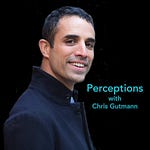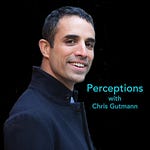It was a hot summer day. Our shirts were sticking to our backs, but we didn’t let that stop us. After all, it had almost been twenty years. At that time, The Big Lebowski was huge and we developed a healthy obsession with bowling. So, the first port of call was the Brunswick Alley, to see if we could still hook a bowling ball to send it spinning down the lane. Then we retired at a Heuriger, a typical tavern on the outskirts of Vienna with a view onto the vineyards. We raised our glasses, filled with sun-coloured spritzers, which broke the late afternoon light as they clinked. My friends from school, the old gang reunited. We all had more hair on our faces, fewer on our heads and an increased circumference around the waist. Some of us had wedding rings, others had wedding ring indentations. One of us had baby photos, the other had holiday photos. The air was brimming with life’s stories filling the voids in which we had lost touch. We reminisced about the good old times. We didn’t know then how good they were.
Realising how much time had passed whilst behaving as if no time had passed, the conversation took a sharp turn. Reliving the memories of old teachers and classes, we asked, “Why did we learn this?” More to the point, the question, “Why didn’t we learn that?” came up when we identified topics that would have given us a head start at university or in our personal and professional lives, e.g. personal finance, budgeting, rudimentary law, taxation, investment, mental health, nutrition, communication skills and learning how to learn. Though all of us would say that we went to a good school, we stumbled upon gaps in our education. As I sat there listening, I thought, “Shouldn’t curriculum designers and teachers be hearing this? What is the point of us talking about this if it isn’t fed back to the school?”
We want young people to do well after they leave school, have good lives and build a better future for themselves and for others. I can’t think of anyone who doesn’t want this. It’s safe to assume that experiences of those who leave school should be of great importance to educators. But how many of us share our experiences with our old schools? And if we were prepared to do so, would they listen? And, if they listened, what would they do with this information?
Complex theories are used to evaluate how alumni engage with their former schools, frequently to draw on financial support (Radcliffe, 2011). Although I see the value in that, I want to focus on the position of the alumni as an underused, untapped resource to bridge the gap between life at school and life after school. When I looked into this topic, I came across the work of Prof. Andy Penaluna at the University of Wales Trinity Saint David. This is Andy:
“I was initially motivated to see if my teaching actually helped anyone long term. It’s all very well asking students that are in front of you what they think now, but their views can change dramatically once they’re in the workplace.” (Penaluna, 2016).
So, when you hear that, you may think as I did, that’s a no-brainer, right? Surely that’s what we should be finding out. You may be surprised that this is rarely if ever discussed in educational circles. Having attended numerous seminars and workshops, it seems as if initiatives to improve or innovate schools come from within the educational bubble. Don’t get me wrong, there are doubtless benefits to sharing best practise, but it isn’t clear what the initiatives for change are based on, nor is it clear whether they are appropriate for the respective educational institution. It is the point at which graduates begin a new chapter in their lives where the rubber hits the road. At this precise juncture not only the accuracy of educational approaches but also the resourcefulness of young adults is tested, whereby the former ought to buttress the latter. In a rapidly changing environment, this inevitable hindrance can become more complex. The best thing to do is to turn the difficulty into an opportunity and pass this information on to prevent the gaps from getting too big.
Andy Penaluna does exactly that with an approach of stepping back to go forward. He uses evidence from past students to help current students using social media platforms. This is one such post:
At school, exam dates and project deadlines are commonly cast in stone with reliable resources, clear-cut deadlines and plenty of time to prepare. However, Andy Penaluna’s ex-students faced many uncertainties as self-employed designers and realized that they lacked basic business skills. With this feedback, Andy started to move deadlines and shift expectations around to unsettle the learning environment. Projects had to be delivered with time sheets for students to accurately judge working hours and the value of their time. This unorthodoxy made his students very uncomfortable, but in the end, they were able to adapt. His alumni played an active role in helping him set up a new course in creative entrepreneurship at his university,
“I had a real challenge with some senior colleagues here once. I wanted to run a new course – but they were very cautious. It was my alumni who convinced them that the perspective was a huge opportunity – it was a gap, not only in their education, but for other people’s education, and it was one that needed to be filled. If the alumni hadn’t told me how important that was to their later careers and lives, I would probably have never persevered with it. We are now working for the European Commission, the OECD and the United Nations, so if it wasn’t for the alumni feeding back, none of that would ever have happened.” (Penaluna, 2016)
Let’s face it, some students don’t understand the relevance of what they have to learn, regardless of how relevant it may be to us. Perhaps it isn’t only what and how but also who transmits the information that makes the difference. Alumni may be in a unique position because they share similar cultural and learning experiences, they are a little bit older but not too much older and might have even had the same teachers. Information from someone who is not a teacher or a parent, but who has gone through, what a student is currently going through is more immediate and more tangible. Larsson, Marshall & Ritchie’s (2022) survey suggests that alumni student interactions deepen the understanding of how the coursework is applied in practise, thus increasing the motivation to perform well on task demands. Alumni can share the latest technological or social innovations or say which part of the curriculum has become obsolete. Successful teaching strategies can be reinforced based on what past students remember and applied. Alumni have forged new connections and can provide teachers, current and future students with previously unknown networks (Penaluna & Penaluna, 2008). This next bit, however, is the most noteworthy. Students’ feedback of their conversations with alumni, demonstrated an enriched learning experience, especially when alumni shared their failures as well as their successes (Penaluna & Penaluna, 2005). In this process “students are encouraged to engage with the dilemmas that the alumni have faced and consider how they would have reacted themselves” (Penaluna & Penaluna, 2008, Pg. 13). I think this idea of forwarding errors from the past to the future is most profound and deeply rooted in what I believe to be a vital component of progress. It is progress in and of itself. As though the one’s that go before clear the path for the ones to follow. They build the bridges, they do the heavy lifting, they step into the fog and draw new maps complete with dead ends.
The following notion, ‘If I had known this or learnt that I would have had an advantage and, therefore, it has to be taught’ must be taken with a pinch of salt. Feedback that may be suitable for one student pursuing a particular line of work may not to be suitable for others. Besides, the more diverse the curriculum, the more difficult this becomes. Teachers may not agree or be able to integrate these new ideas. Alas, the school year only has so many days. By the time a consensus is arrived at, valuable time is lost, and implementation scuppered, because schools are an open, organic system with limited resources and teachers coming and going. To address said issues, Andy and Katherine Penaluna crafted the Continuous Curriculum Review Model (CCRM) for a more flexible and responsive curriculum. CCRM employs a cyclical design to test new initiatives using feedback loops. The alumni consult on a provisional concept, which is tested against the faculties’ requirements and learning outcomes. The experiences of alumni are delivered to students as evidence to support the relevance of the initiative. Then feedback from students and staff is assessed and consolidated in a report, which forms the basis for a new provisional concept.
Continuous Curriculum Review Model (Penaluna and Penaluna 2008)
Needless to say, not every former student will be up for this. People are busy and move on. The type of person, who would make the effort and take the time to do this, most likely feels a strong connection to their school. Gaier (2005) argues that the more satisfied alumni are with their educational experience the more likely they’ll be to participate. This sheds light on an incentive for schools to cultivate a meaningful experience for students and a willingness to listen. As an incentive, Andy and Katherine Penaluna employ a reciprocal approach; ex-students can come to them for informal advice and mentoring in exchange for their feedback (Penaluna & Penaluna, 2008).
Graduation is a moment when it dawns on even the most detached students, how much time they have spent with their peers and teachers. Years of listening, discussing, laughing and struggling culminating at this point. At one such ceremony, I heard a director describe his school as a tall building, where students gradually move up the various levels and the teachers occupy the top floors. From their position, teachers can see the bigger picture, however, they are also further removed from the ground. I suggest this gap can be filled by the alumni walking in and out of that building to improve connectivity between schools and the outside world. After all, a single conversation in which errors are forwarded has the potential of saving people years of valuable time. In a sense, I want to use this platform as a means of broadening this conversation as far and wide as possible to highlight what we didn’t learn at school and perhaps should have.
Bibliography
Gaier, S., 2005. Alumni satisfaction with their undergraduate academic experience and the impact on alumni giving and participation. International Journal of Educational Advancement, 5(4), pp.279-288.
Penaluna, A. (2016) 'The Value of the Alumni'. Interviewed by Chris Gutmann, MA Education IoE (UCL), Module: Curruculum, Policy & Practise.
Penaluna, A. & Penaluna, K. (2005) Entrepreneurship for Artists and Designers in Higher Education. Paper presented at the Internationalising Entrepreneurship Education and Training Conference (IntEnt2005), Guildford
Penaluna, A. and Penaluna, M.K., 2008. Business paradigms in Einstellung: Harnessing creative mindsets, a creative industries. Journal of Small Business & Entrepreneurship, 21(2), pp.231-250.
Shen, H. and Sha, B.L., 2020. Conceptualizing and operationalizing alumni engagement: When conversational voice matters more than openness and assurances of legitimacy. Public Relations Review, 46(5), p.101974.












